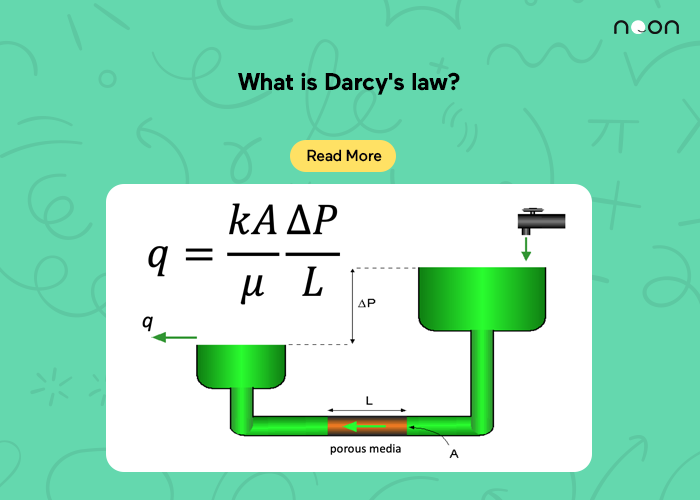Darcy’s law is a fundamental concept in fluid mechanics and hydrogeology. It states that the flow of a fluid through a porous medium is proportional to the pressure gradient across it. This law, originally formulated by French hydrologist Henry Darcy in 1856, has been used to gain an understanding of many geological processes such as groundwater flow, river flow and other subsurface phenomena.
In this blog post, we will be exploring the principles and applications of Darcy’s law, its importance in geology and engineering, as well as some practical examples to get a better understanding of this invaluable tool.
What is Darcy’s law?
In 1856, Henri Darcy published his now-famous paper on the movement of water through porous media. In it, he presented what has come to be known as Darcy’s law. This simple relationship between the flow rate and hydraulic gradient has been used countless times to describe groundwater flow.
At its most basic, Darcy’s law states that the flow of a fluid through a porous medium is proportional to the negative of the hydraulic gradient. In other words, if the hydraulic gradient is pointing downhill, the fluid will flow in that direction. If the gradient is pointing uphill, the fluid will flow in the opposite direction. The constant of proportionality is known as Darcy’s coefficient or permeability.
While Darcy’s law is a useful tool for understanding and predicting groundwater flow, it’s important to remember that it only applies under specific conditions. In particular, it assumes that the porous medium is homogeneous and isotropic (i.e., all pores are the same size and shape and are evenly distributed). It also assumes that the fluid is incompressible (i.e., its density does not change with pressure) and Newtonian (i.e., its viscosity does not change with shear rate). These assumptions are often met in groundwater systems, but they are not always valid.
How is Darcy’s law used?
Darcy’s law is used to calculate the flow of a fluid through a porous medium. The law is named after Henry Darcy, who first wrote about it in 1856. The equation for Darcy’s law states that the flow rate of a fluid (Q) is proportional to the gradient of the hydraulic head (h), and the cross-sectional area (A) through which the fluid can flow:
Q = -khA
where k is the intrinsic permeability of the porous medium.
The equation can be rearranged to solve for h, giving:
h = -(Q/kA)
Thus, Darcy’s law can be used to estimate the hydraulic head gradient, and hence the potential energy of a fluid flowing through a porous medium.
What are the benefits of using Darcy’s law?
When water is flowing through a porous material, like sand or gravel, Darcy’s law can be used to calculate the flow rate. The benefits of using Darcy’s law include its accuracy and its ability to take into account different parameters that affect flow rates, such as porosity and permeability. Additionally, Darcy’s law can be used for both laminar and turbulent flow, making it a versatile tool for engineers.
Are there any drawbacks to using Darcy’s law?
Yes, there are some drawbacks to using Darcy’s law. One drawback is that it can be difficult to apply Darcy’s law to real-world situations because the law is based on idealized conditions that are not always present in the real world. Another drawback is that Darcy’s law can only be used to predict flow rates under steady-state conditions; it cannot be used to predict transient flow rates (rates that change over time).
Conclusion
In conclusion, Darcy’s law is an important equation in fluid mechanics that describes the flow of fluids through porous media. The law has been used to make predictions and understand physical phenomena such as groundwater flow and subsurface reservoir behavior. Understanding how Darcy’s Law works can help engineers design better systems for water supply and treatment, helping us manage our natural resources more efficiently.
Noon is an application for online learning with professional teachers. With over 10,000 lectures on different subjects, it provides the perfect opportunity to learn from the best teachers from across the globe. Whether you’re looking to ace your next exam or simply want to learn more about other subjects, Noon is the ideal solution.
Ultimate Teacher’s Assistant Tool for E-learning: Not only does Noon provide teachers with tools for online teaching, but it is also an online study app for students. With video streams online, and high-quality videos with interactive classrooms, it has everything you need to succeed.
